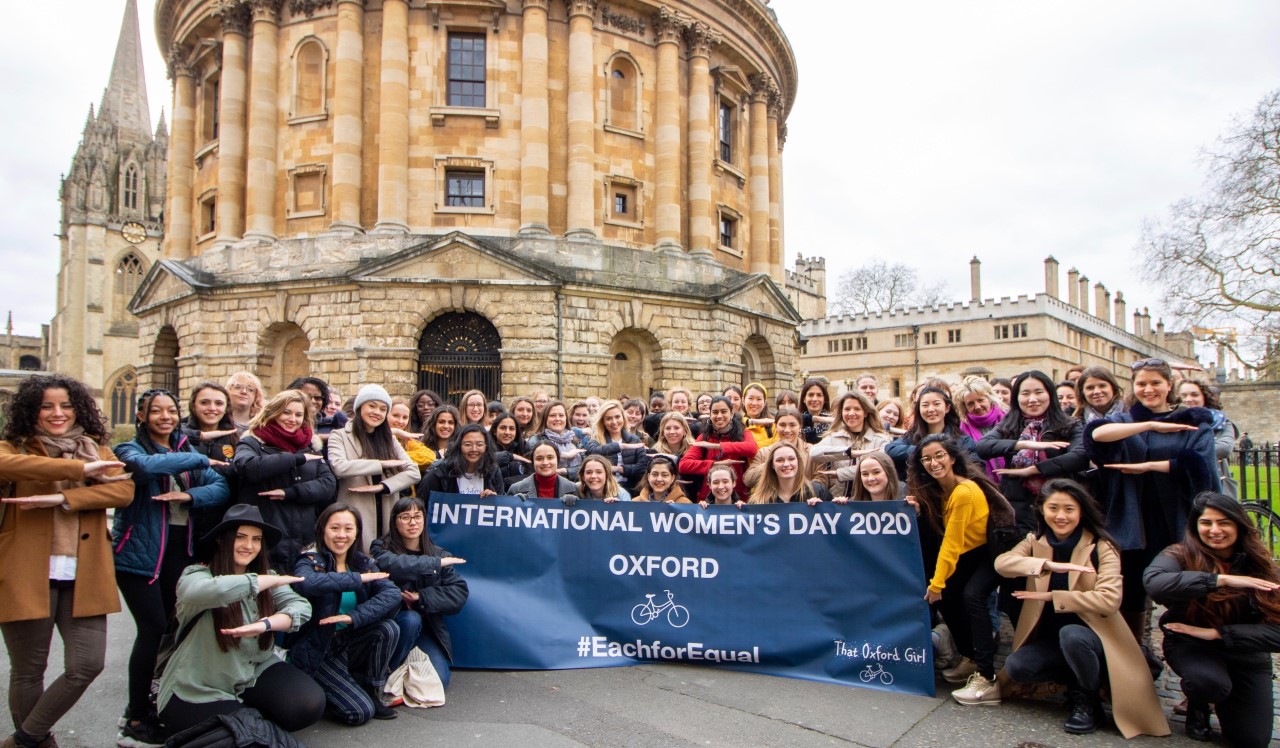Today is International Women’s Day 2020. The Oxford Scientist is written, edited and read by women scientists across Oxford University and beyond. How better to celebrate than by reminding ourselves of those who came before, what still needs to be done, and how we can mobilise change to keep improving the experiences and opportunities for Oxford women in STEM subjects.
Women – past
Oxford University was founded in 1096. For 779 years, exclusively men studied, graduated, and went on to enter professions spanning (and often establishing) all known sectors. In 1785, the first cohort of women was permitted to sit examinations at the equivalent of undergraduate level (these exams did not confer university degrees). Within the next decade, two female-only colleges were established in 1878 and 1879: Lady Margaret Hall and Somerville. Another 40 years passed until finally, in 1920, that women were allowed to be full members of the university and given the right to take degrees.
Oxford University, in 2020, is celebrating 100 Years of Oxford Degrees for Women1.
Virginia Woolf, in A Room of One’s Own, wrote of this uphill battle for women’s education in Oxbridge. “Not a penny could be spared for ‘amenities’: for partridges and wine, beadles and turf, books and cigars, libraries and leisure. To raise bare walls out of the bare earth was the utmost they could do.”2
Women – present
The University of Oxford publish an annual equality report which details the efforts, goals, and progress made in the attempt to make Oxford an institution which gives equal opportunity and representation to all its members3.
At undergraduate level, women make up 49% students; at post grad level, women make up 47% and 42% of students for taught and research degrees respectively. This looks like we’re headed in the right direction, but if you scroll down through the equality report, you’ll find a slightly different picture when it comes to STEM subjects. In Maths, Physics and the Life Sciences (MPLS) women make up only 29% of the student population. The gender inequalities in STEM are lagging behind other subjects; work needs to be done.
Women in science research at the university show good representation at PhD and postdoctoral researcher levels, but stats show that their numbers tail off at the levels of PI, professor, and seats on divisional boards. Women represent 33% of total divisional board members, across all subjects at Oxford. In Maths, Physics and Life Sciences, however, this number drops to 20%, and in the Medical Sciences Division to 22%. In simpler terms, men outnumber women 3-4:1 in STEM subject boards; surely this will have a trickle-down effect on how the courses are run?
Women – future
Luckily for women in STEM at Oxford, progress is being made. That Oxford Girl4 is a free educational platform revolutionising access and increasing social mobility to Oxford. Founded by Tilly Rose, TOG has 100+ female student ambassadors, many of whom study STEM subjects, who together contribute to the TOG library. The TOG website contains a plethora of articles which aim to help women on their journey to, or through Oxford.
TOG is marking International Women’s with a campaign to bring together the Women of Oxford. TOG has worked with a number of inspiring, and influential students5 who support their access resource. As well as this, IWC is being celebrated with a group photo, with everyone striking the #EachforEqual pose (an equals symbol).
TOG’s message for Oxford is:
If we can inspire future generations of women into education/higher education, they will not only transform their own lives and career opportunities but those of their families, communities, and economies of their countries, creating lasting change.

With work from That Oxford Girl, and countless other initiatives in Oxford (and beyond) the future looks bright for women in STEM. Woolf offers a final piece of invaluable advice for women everywhere: ‘it is much more important to be oneself than anything else.’
*Please note that all references to women in the above article refers to all people who partially or fully identify as women and anyone whose gender identity may include woman.
1: http://www.ox.ac.uk/about/oxford-people/women-at-oxford
2: A Room of One’s Own Virginia Woolf
3: https://edu.admin.ox.ac.uk/files/universityofoxfordequalityreport2017-18pdf
4: https://www.thatoxfordgirl.com/home
5: https://www.thatoxfordgirl.com/post/iwd-2020-oxford-influencers
All statistics are taken from the 2018 data of the 2017/2018 Equality Report, University of Oxford





